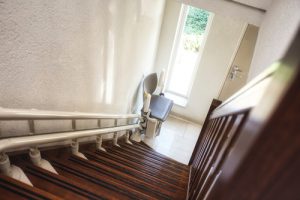Aging In Place – Designing Homes For Comfort And Accessibility For All Ages
 Aging In Place – Designing Homes For Comfort And Accessibility For All Ages
Aging In Place – Designing Homes For Comfort And Accessibility For All Ages
As people age, they often face challenges with mobility and accessibility in their homes. Tasks and movements that were once easy may become more difficult, leading to frustration and a reduced quality of life. However, with the right design considerations, homes can be made comfortable and accessible for people of all ages and abilities, enabling them to age in place and maintain their independence and autonomy.
The concept of aging in place is becoming increasingly popular as more people desire to remain in their own homes as they age. Aging in place refers to the idea of individuals staying in their preferred living environment for as long as possible, regardless of age or physical limitations. To make this possible, homes must be designed with accessibility and safety in mind. Let’s explore some key design considerations for aging in place homes.
Eliminating Physical Barriers
One key design consideration is the elimination of physical barriers. This includes steps, stairs, narrow doorways, and tight corridors. Even minor obstacles can pose a major challenge for those with limited mobility. Ramps, stairlifts, and elevators can be installed to remove physical barriers and make homes accessible to all. Wider doorways and hallways are also essential for negotiating with wheelchairs and walkers.
Universal Design Principles
The use of universal design principles can also aid in creating spaces that are accessible for all ages and abilities. Universal design emphasizes the creation of spaces that are equitable, flexible, and easy to use for all. This includes features such as lever door handles, accessible light switches, non-slip flooring, and grab bars in showers and toilets. These types of features not only improve accessibility for older individuals but can also benefit individuals with disabilities, families with young children, and anyone who may experience temporary mobility issues.
Proper Lighting
Another important aspect of aging in place design is the use of proper lighting. As people age, their eyesight may decline, making it more difficult to see and navigate their homes. Adequate lighting, both natural and artificial, can help to prevent falls and accidents. Nightlights and motion-sensor lighting can also be installed to aid in nighttime mobility.
Comfort and Convenience
Comfort and convenience are also important factors to consider when designing homes for aging in place. People want to feel comfortable and safe in their homes and be able to perform daily tasks with ease. Comfortable furniture, easy-to-reach storage, and appliances with larger buttons and dials can all improve the overall comfort and convenience of a home. Additionally, technology such as voice assistants and home automation systems can make homes more manageable for those with physical limitations.
Designing Bathrooms for Aging in Place
Bathroom design is also a critical aspect of aging in place. Bathrooms can be high-risk areas for falls and accidents, and the layout and accessibility of the space can make a significant difference in the user’s overall safety and comfort. Considerations such as barrier-free showers, non-slip flooring, grab bars, and elevated toilets can all improve the accessibility and safety of a bathroom. Additionally, the incorporation of a walk-in shower or tub can make access significantly easier and reduce the risk of falls.
Adaptations for Changing Needs
It is essential to note that aging in place design is not just for the older population; it is for anyone who desires to maintain an independent lifestyle in their own home. As people age, their physical abilities may change, and their needs may shift. By implementing aging in place design features early on and making adaptations when needed, individuals can stay in their homes and maintain their independence for as long as possible.
Final Thoughts
In conclusion, designing homes for comfort and accessibility is essential for all ages and abilities, and it’s crucial for aging in place. When designing homes for aging in place, it is essential to consider physical accessibility, safety, comfort, and convenience. Eliminating physical barriers, incorporating features such as universal design, proper lighting, and bathroom design, and integrating technology can all contribute to a safer, more comfortable, and accessible home environment. By making these design considerations early on, individuals can enjoy their homes and maintain their independence for longer.
